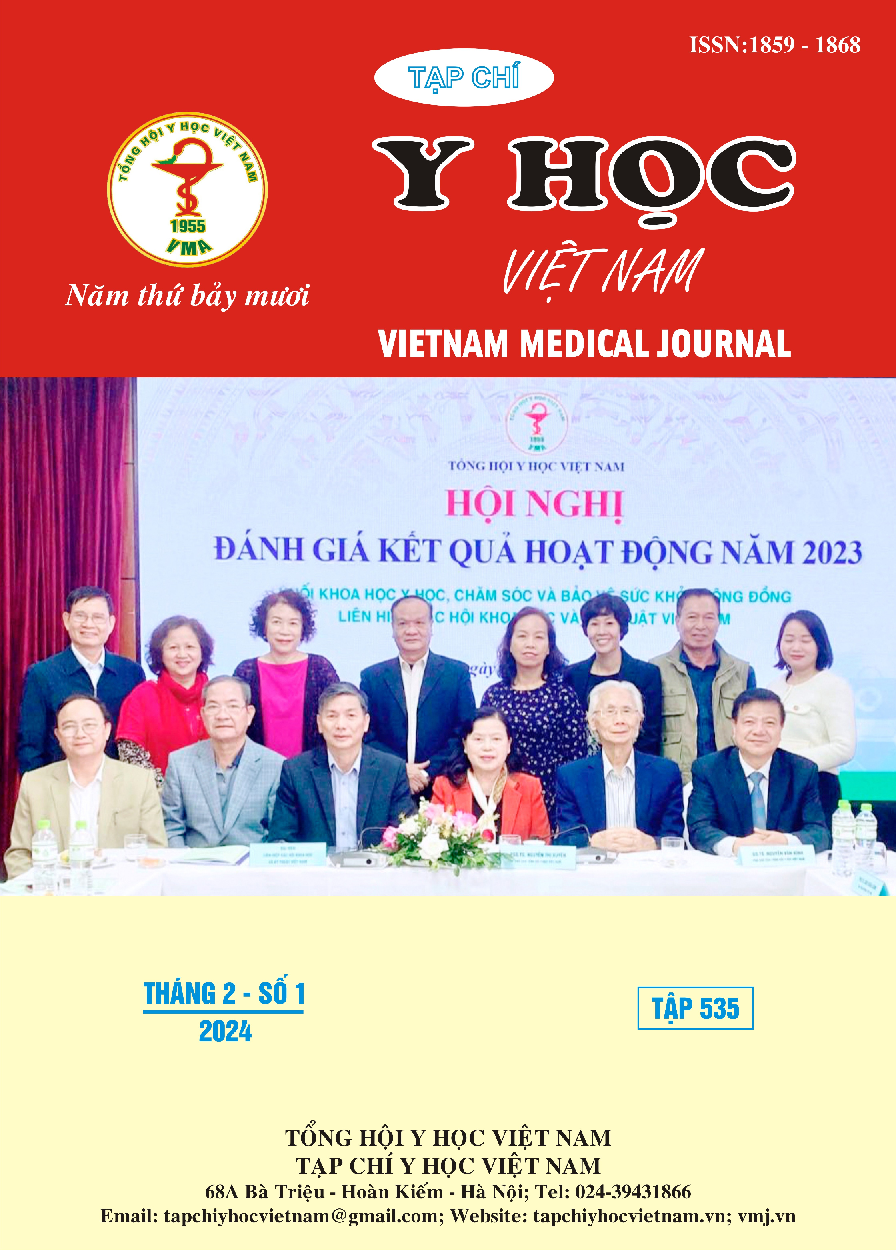MỐI LIÊN QUAN GIỮA KẾT QUẢ CHIMERISM VÀ MỘT SỐ BIẾN CHỨNG SAU GHÉP TẾ BÀO GỐC ĐỒNG LOÀI ĐIỀU TRỊ MỘT SỐ BỆNH MÁU TẠI VIỆN HUYẾT HỌC - TRUYỀN MÁU TRUNG ƯƠNG GIAI ĐOẠN 2010 - 2021
Nội dung chính của bài viết
Tóm tắt
Đánh giá chuyển đổi mảnh ghép giữa người hiến-bệnh nhân (chimerism) có ý nghĩa quan trọng trong theo dõi kết quả ghép. Mục tiêu: Tìm hiểu mối liên quan giữa kết quả chimerism và một số biến chứng sau ghép tế bào gốc đồng loài điều trị một số bệnh máu tại Viện Huyết học - Truyền máu Trung ương từ 2010 - 2021. Đối tượng: 218 bệnh nhân thuộc cả nhóm bệnh lành tính và ác tính được điều trị bằng ghép tế bào gốc đồng loài tại khoa Ghép tế bào gốc. Phương pháp nghiên cứu: Nghiên cứu phân tích, hồi cứu kết hợp tiến cứu. Kết quả: có 170 bệnh nhân đạt chimerism hoàn toàn, 19 bệnh nhân đạt chimerism hỗn hợp và 29 bệnh nhân thải ghép. Những bệnh nhân có chimerism hoàn toàn thì xác suất sống toàn bộ, xác suất sống không biến cố đều cao hơn, nguy cơ nhiễm trùng, thải ghép đều thấp hơn so với nhóm còn lại, tuy nhiên xác suất gặp bệnh ghép chống chủ mạn lại cao hơn. Chimerism sụt giảm bất kỳ giai đoạn nào sau ghép đều làm tăng nguy cơ tử vong. Kết luận: Đánh giá chimerism có vai trò rất quan trọng trong theo dõi kết quả sau ghép tế bào gốc đồng loài để có chiến lược can thiệp phù hợp.
Chi tiết bài viết
Tài liệu tham khảo
2. H Joachim Deeg, Rachel B Salit, Tim Monahan, et al. (2020). Early Mixed Lymphoid Donor/Host Chimerism is Associated with Improved Transplant Outcome in Patients with Primary or Secondary Myelofibrosis. Biol Blood Marrow Transplant, 26, 2197-2203.
3. Seyed Asadollah Mousavi, Mina Javadimoghadam, Ardeshir Ghavamzadeh, et al. (2017). The Relationship between STR-PCR Chimerism Analysis and Chronic GvHD Following Hematopoietic Stem Cell Transplantation. Int J Hematol Oncol Stem Cell Res, 11, 24-9.
4. Bungo Saito, Takahiro Fukuda, Hiroki Yokoyama, et al. (2008). Impact of T Cell Chimerism on Clinical Outcome in 117 Patients Who Underwent Allogeneic Stem Cell Transplantation with a Busulfan-Containing Reduced-Intensity Conditioning Regimen. Biol Blood Marrow Transplant 14, 1148-55.
5. Monika Lejman, Agnieszka Zaucha-Prażmo, Joanna Zawitkowska, et al. (2019). Impact of early chimerism status on clinical outcome in children with acute lymphoblastic leukaemia after haematopoietic stem cell transplantation. BMC Cancer, 19, 1-8.
6. Ran Reshef, Elizabeth O. Hexner, Alison W. Loren, et al. (2014). Early Donor Chimerism Levels Predict Relapse and Survival after Allogeneic Stem Cell Transplantation with Reduced-Intensity Conditioning. Biol Blood Marrow Transplant 20, 1758-66.


